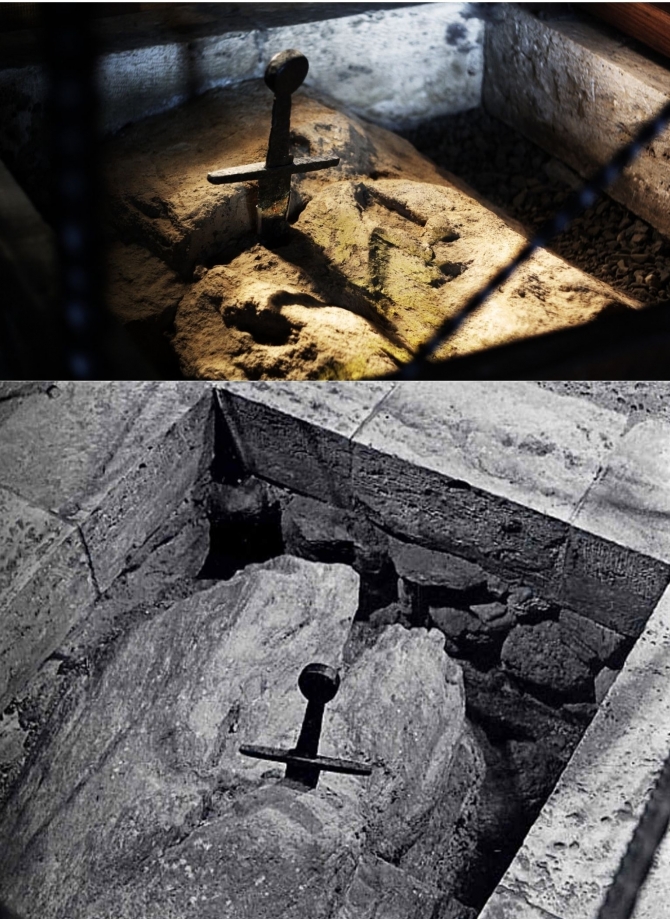In Tuscany, in a fourteenth-century chapel in San Galgano, together with some frescoes by Ambrogio Lorenzetti, the skeletons of the arms and hands that legend says were of one of the undeserving who tried to extract the sword from the rock are visible in an armored casket of San Galgano.
The chemical analyzes conducted by Luigi Garlaschelli and Maurizio Calì tell us that those bones could date back to the 12th century. And this will be revealed among the supporting connections linking San Galgano to the mystery of King Arthur and the Round Table; There is therefore a connection between San Galgano and King Arthur among the many clues, meanwhile the name, assert some researchers, Galgano, so similar to Galvano, one of the knights of the round table. And then the connections, known and verifiable by the historical records between the Tuscany of the Merse Valley, where the Via Francigena passed, and the medieval France of Chrétien de Troyes, the great author of the Arturian cycle.
To bring to the homeland of Chrétien de Troyes the story of Galgano would have been another hermit, William of Malavalle; according to some historical scholars, William of Malavalle could be not only of French origin but one of the kings of Aquitaine.
The original legend of the sword in the rock would therefore be born in Tuscany at the end of 1100 even if according to the known legend, King Arthur would have lived many centuries before.
Certainly the allegory of the sword in the rock is very evocative and certainly an extremely powerful instrument, precisely for the visceral archetypes that originate its symbolism.
Every symbol and every allegory must be observed and meditated as a prism of infinite faces, which can offer us also different truths, which can be very varied and not necessarily connected to each other, if not to be suggested by the same symbol; therefore a single interpretation is almost never enough to obtain the proverbial sums or to close the emblematic circle.
In this specific case, the sword in the rock, can evoke our most intimate, authentic and profound nature, which we try to bring out, taking it to the surface, but to do this, we must fight with our own rationality, that from weapon to our service, refined over the years, can become, in certain situations, when we try to overcome certain inner limits, a quagmire of mental, cultural and psychological conditioning that in some areas, no longer perform the function of protecting and guiding us in the everyday world, but they risk limiting ourselves through our own rationality, which pursuing a coherence, can fatally circumscribe our inner horizons, risking to compromise really radical evolutions even when there could be founded reason to evolve in them and even if we potentially should have the inner means to operate it.
This conflict, generated by the friction of these internal automatisms as opposed to the fluidity of the evolution of awareness and pure intuition, is well represented by the sword in the rock, which seeks to emerge on the surface, overcoming the friction of the rock.
